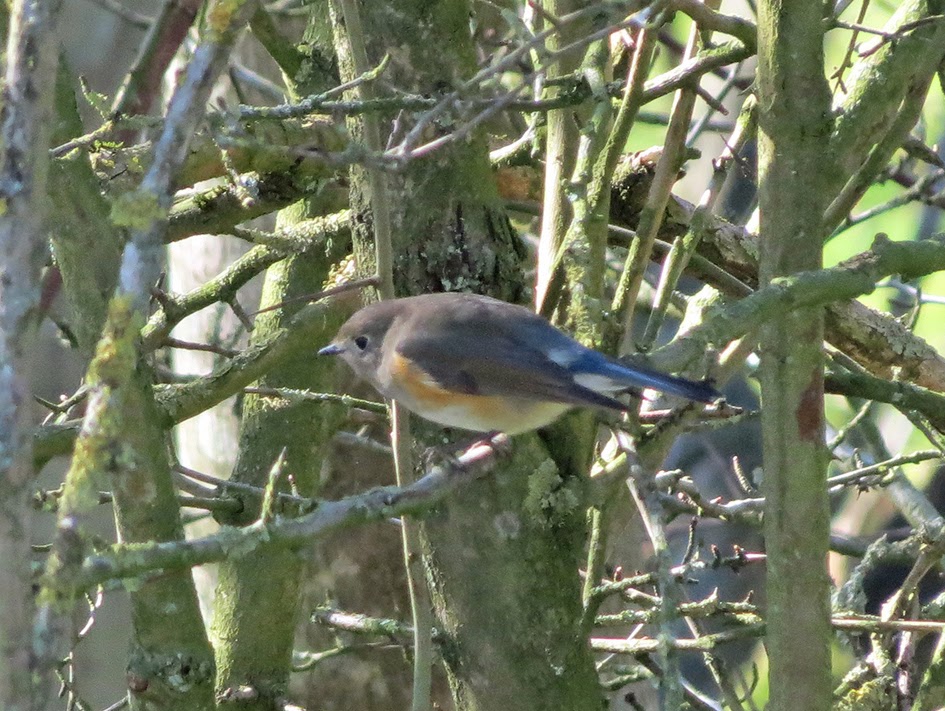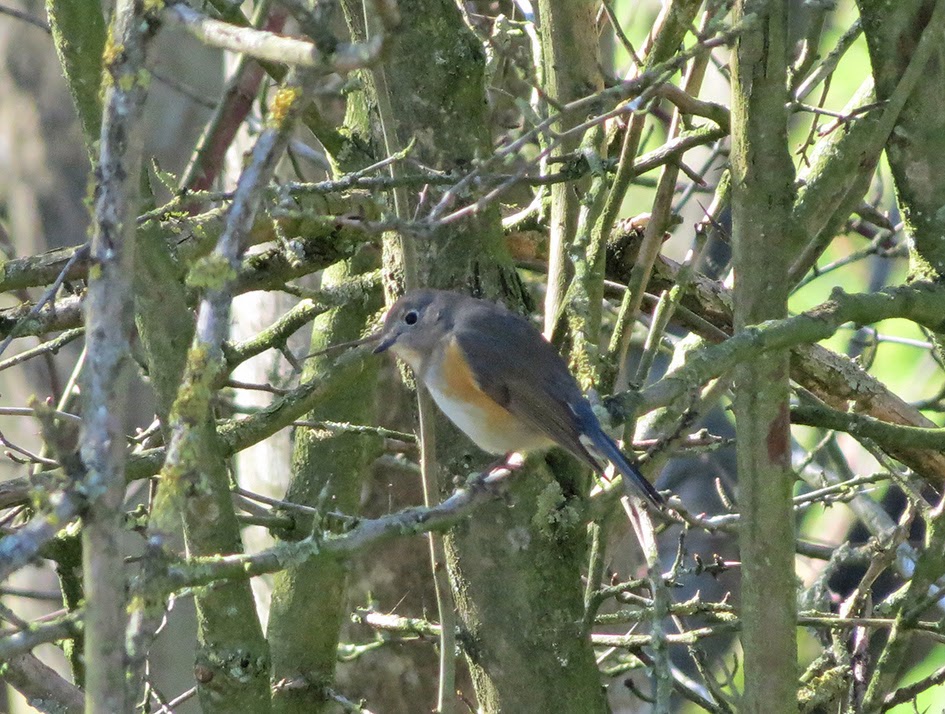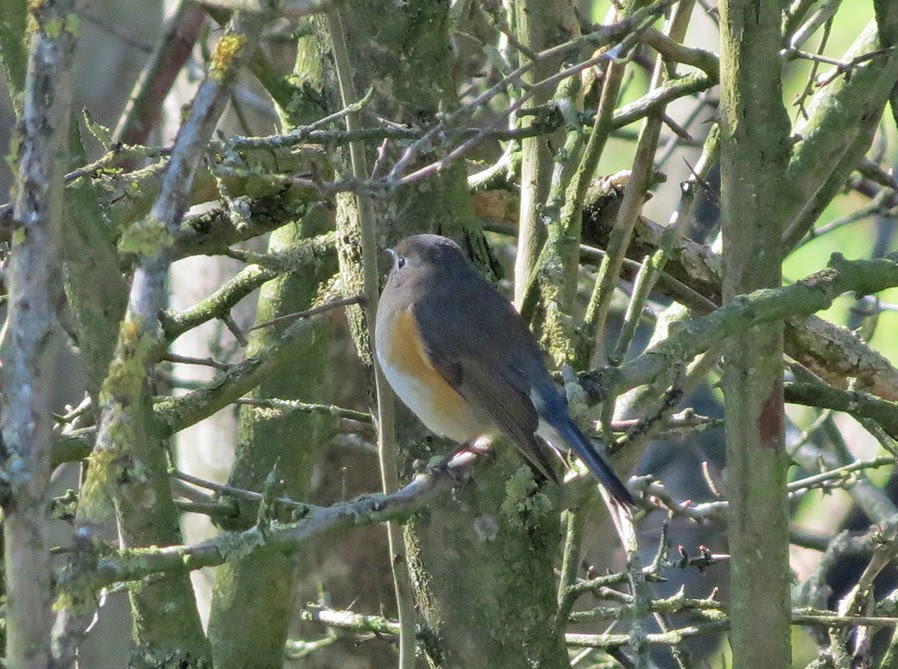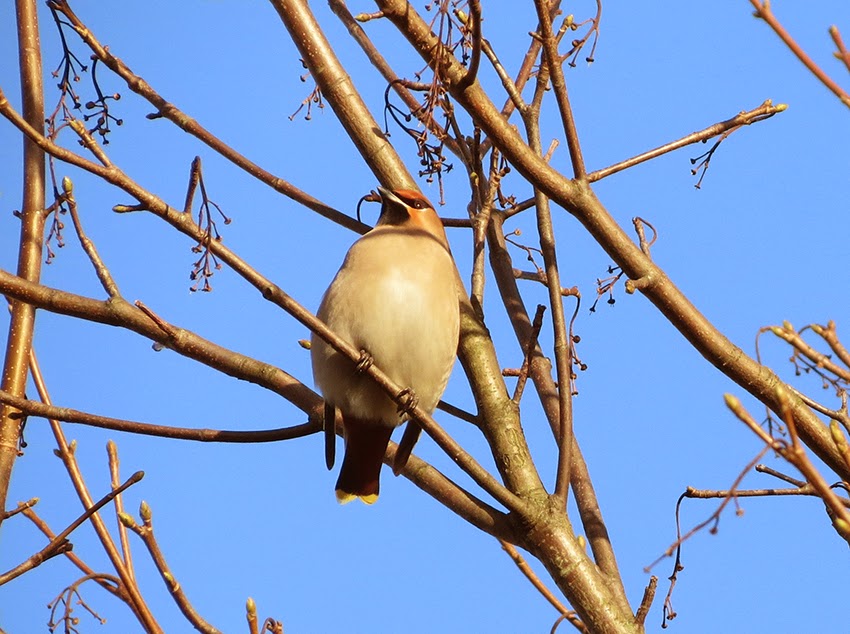Red-flanked Bluetail, Marshfield, Gloucestershire - Sunday 9th March 2014
First found on Monday 3rd February 2014 by John Barnett, who knows how long this bird had been around in the area or the country? I think it's unlikely that it arrived in February directly from its Siberian breeding grounds, getting lost en route to Burma. More likely it had wintered at first on the western side of the continent, or even had been elsewhere in the UK, avoiding detection.
I went to see the bird on the gloriously warm and sunny Sunday 9th March. Most of the others birders on site were photographers, hoping for a good shot in the better light. The late winter had been mild, but mostly overcast and, in the west country in particular, very wet.
The bird performed beautifully, showing well in the bare hawthorn just above the stream. The stream is in a relatively steep-sided vale, meaning observers could be close and at eye-level with the bird.
The good weather and viewing meant I could relax and enjoy the view. I found the bird's plumage fascinating. The "red" flanks were actually a lovely 1970s Kia-Ora orange, like on a Bramling, and often appeared fluffed out. The blue of the tail a rump had an iridescent quality, making it stronger in certain lights and poses. The rump also had small pale patches, just under the wings, which really only showed when the bird was in flight or in certain resting poses. The breast was a soft pale buff, and the wings and mantle were a Robin-like mid-brown tinged with grey. The neck, face, sides of the throat and upper breast were grey, but with an off-white around area bill and throat. It had a strong white eye-ring.
The bird flicked its blue tail frequently, if not constantly, and generally its behaviour was similar to a Robin. It spent most of it's time perched on an inner branch of a hawthorn, no higher than a third of the way up the tree. It would occasionally pick at food items on the branches and on two occasions I saw it flit out to catch flying prey in the manner of a flycatcher. Photographers had placed mealworms on a small grassy mound near its favourite trees, and it came down to these on two occasions while I was there, though the bird seemed to be struggling to swallow the second mealworm for some time.
Red-flanked Bluetail, Marshfield, Gloucestershire - Sunday 9th March 2014
It didn't seem to mind the close proximity of passing birders who used the lower path behind the trees as they left. But whenever dog walkers used this the bird flew off to another clump of trees until the dogs had passed. Two horse riders came along the lower path and one asked what all the fuss was about. When told there was a rare bird in the tree in front of her, she brought the horse round to within one metre of the branch we were pointing at and said, "Here?". There was a collective groan as the bird flew well away, right upstream. "Not any more", came the deflated response from the twitchers, followed by by a more muted, "you stupid...". Eventually it returned, but not before some newcomers had a anxious wait.
There was a lot of talk on site about how long the bird would stay, prompted by a question form some really friendly and interested locals. I reckoned the high pressure and sunny weather might trigger the bird's migratory urge, or zugunruhe. For once I might have been right, as there was no sign of it the following day, or since. So I was damn lucky to see it when I did. I've tried, and failed, to see this species in Britain before, at Flamborough Head in 2012. That was a frustrating twitch, so this relaxing occasion was all the more enjoyable.
Idyllic...
I hung around in the area for a few hours, enjoying countryside and soaking up the sun as much as birding. There were a few insects on the wing. My first Small Tortoiseshell and Peacock butterflies of the year, along with Red-tailed and Buff-tailed Bumblebee. A Pied Wagtail flew upstream, "chirruping" all the way (a Chiswick Flyover), and Skylarks were singing from their hidden positions right above my head. I saw at least six Buzzards in the area. There was a flock of 40+ Fieldfare at the farm to the north of the Bluetail Valley, which seemed incongruous in the summery weather. As I headed home I called in at another farm to the south of the valley, and found my first Corn Bunting of the year, along with numerous Yellowhammers. A grand day out.




























